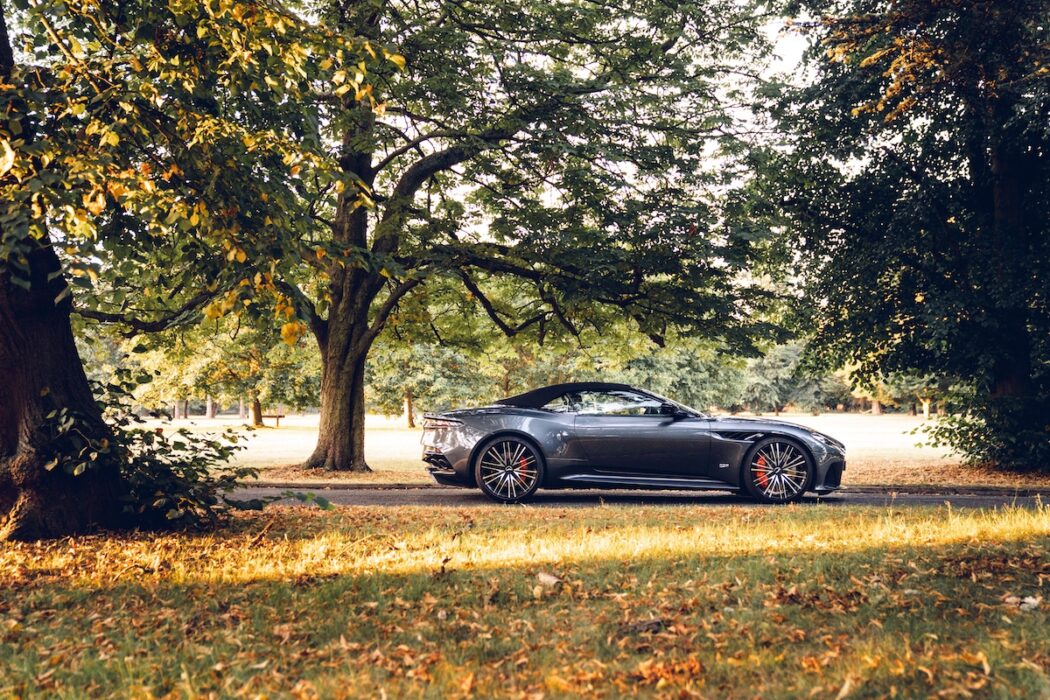Aston Martin is a brand synonymous with the British sports car industry. They gave James Bond his ride and can still tug on the heartstrings of many a petrolhead. Occasionally they seem to skirt the line between success and failure with only millimetres to spare. From humble beginnings to a series of curious ownership structures and slightly wayward direction to their model line up (please Google the Lagonda).
We now find Aston again at a crossroads of their history. The DBX is the long awaited and much vaunted foray into the SUV market deemed so necessary by finance departments everywhere in the automotive landscape. Having secured the requisite 1,200 orders to allow for the cash injection required to move forward with the production of the car itself. They have also now taken up residence at the vast production facility at St Athan, built (in part) to produce the DBX itself.
However, I’m here to discuss the DBS Superleggera Volante, not try and throw a crystal ball at their future. The DBS is a car whose name leads you into the detail of its performance, intent and form. DBS were three letters first seen in 1967 in the William Towns designed original, created to replace the, by now, rather portly DB6. The name was resurrected in 2007 and now sees its use again. Since 2018, in coupe form, and now also the car I have possession of for the next six days, the Volante.
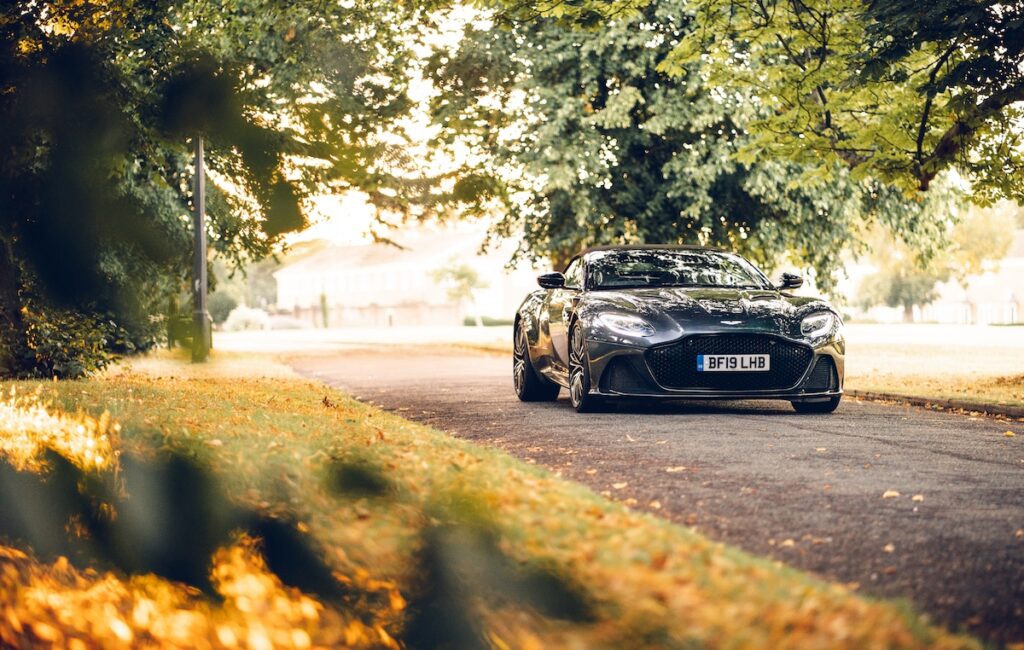
Credit: Sam Moore
Carrozzeria Touring Superleggera were employed by Aston way back in 1964 to utilise their superlight fabrication methods to aid the race performance of firstly the DB4 and then latterly its successor, the DB5. The lightweight tubular creations for which they were famed now fall foul of pretty much every safety test you could throw at them, so the name is, at least in part, an evocation rather than a determination.
What the car does have now is the only in-house drivetrain which they produce, their twin-turbo 5.2 litre V12. With Mercedes supplied parts adorning much of the interior, they also supply a twin-turbo V8 to the Vantage and DB11, variants of which can be found in many of Mercedes’ own products. No bad thing, perhaps? Major manufacturer supplied parts are invariably less glitchy and come from an R&D budget that would dwarf anything at Aston. So, as the flag bearer for Aston Martin, it had better be a certified powerhouse of a powertrain.
On a blindingly bright and hot July day in my sunny corner of Surrey, sat nursing my morning espresso, a rap at the door alerted me to my suited (and masked) delivery driver, Ken. We found a quiet part of the street to go over incidentals and to acclimatise myself with the car.
On first inspection, one is immediately taken by the sheer size of it. At approaching five metres in length and just shy of two metres wide, it is certainly no shrinking violet. The big, aggressive front air intake is huge, a cavernous mouth eagerly gobbling all the air it can to cool and feed the twin turbos powering the 12 cylinders. This was finished in a paint from their contemporary palette, xenon grey: a colour so sparkly, it did cross my mind that someone had perhaps slipped with the flake when painting this particular example. It is in the bright sun that one gets this full effect, which is quite a sight in itself. In duller lights, it returns to a gunmetal grey: understated, but set off well with the optioned black screen surround. The aggressive lines continue through the arches where the curlicue behind the front wheels adds more drama, but also aids with air flow and downforce, directing air to the sills. Huge rear arches provide amusement and fear in equal measure as driving to negotiate some of the smaller surrey lanes and tighter London streets can prove difficult should one not be accustomed to a car so, so…girthy. A carbon fibre front splitter and a cavernous reformed rear diffuser, special to the volante add both drama and cache. But the front splitter is the thing to be most aware of, as the car as tested did not come with axle lift and is deceptively low at the front. Speed bumps require some manoeuvrings, but for the most part the aggressive drama of the exterior by far outweighs any of the negatives. A theme seemingly oft repeated with this car.
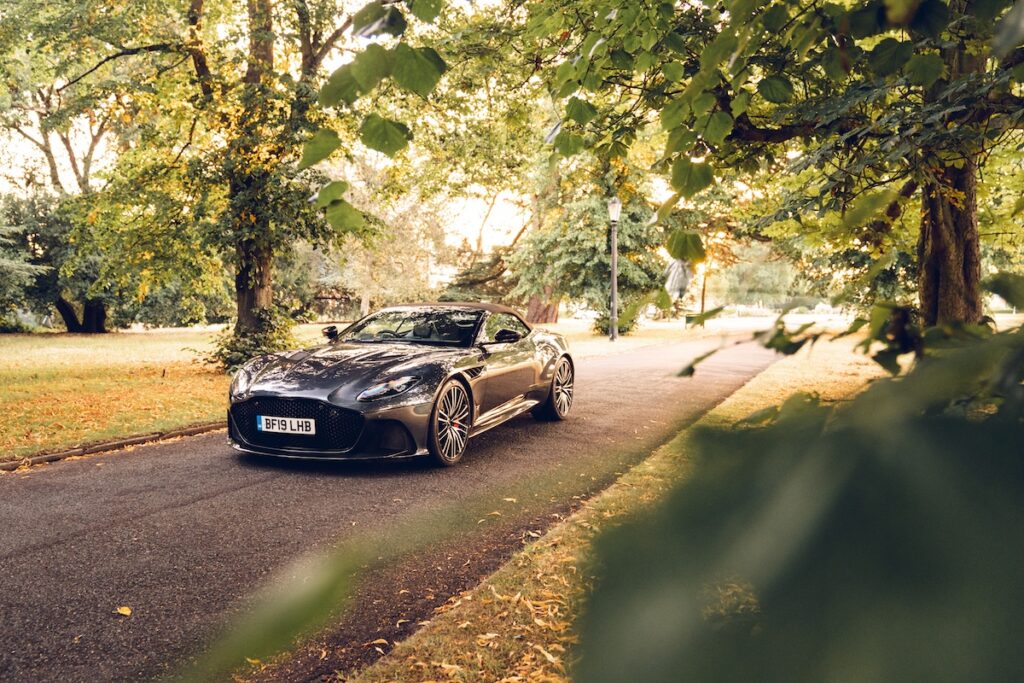
Credit: Sam Moore
My aim was to use the car as much as possible to take in as many sights, sounds, smells and miles as could fit into the hours. A night at a drive-in movie courtesy of the ever-dynamic dealer, Duke of London, replicating a 1950s vibe for pizza and movies, was enjoyed with the top down as it should be. And in the best of company, being parked directly behind a Bugatti Veyron Vitesse.
A couple of forays into central for meetings and the quintessential English weekend break at Oatlands Park. Newly refurbished and, of course, covid-ready. The Surrey Hotel having been the starting point and rest stop for many classic rallies of yesteryear, and with such proximity to Brooklands, it seemed an apt location and provided a wonderful setting for the photography that accompanies these words. The hotel was the location for many a car tour in previous years, including a meeting of the Rolls Royce owners club in 1907. Originally King Henry VIII Surrey hunting lodge, the Hotel were kind enough to provide their wonderful grounds for photography, and, of course, a couple of rounds of evening cocktails with which to ruminate on the performance of the car.
What, therefore, were the enduring memories from the time I had the car. What I will remember from the time is undoubtedly the drivetrain and aural note that it produces. I made the mistake of taking in my surroundings before considering what they delivered. For a day and a half, I almost felt aggrieved that it wasn’t the easy, placid supercar that perhaps I and may others have become accustomed to. Foot down, its wide eyes, white knuckles and the feeling that you’re a passenger as the exterior blurs past you.
No four-wheel drive system means that the car feels slippery, greasy underneath you. It sounds rather cliched, but it truly feels slightly alive as you grip the fat, leathered steering wheel and modulate the accelerator. By no means is this a 911, dialling you in from the seat of your pants. Nor is this a McLaren, razor edged and electronically minded. I’m not sure that I would have wanted any of those sensations, because It does feel inherently Aston Martin, and that has to be one of its definite plus-points. The all alloy overhead quad cam engine is mated to a new 8 speed ZF automatic gearbox fed via a carbon fibre prop shaft, reinforced to cope with the DBS’ party piece, its 900nM of torque, accessible from as little as 1800rpm. This, coupled with a surprisingly-intuitive electronic set up means the car is rarely in the incorrect gear. Either through paddle use of allowing the automatic box to do its own thing, one finds oneself making uninterrupted progress as gear changes are made efficiently and never seem to cut in when not desired.
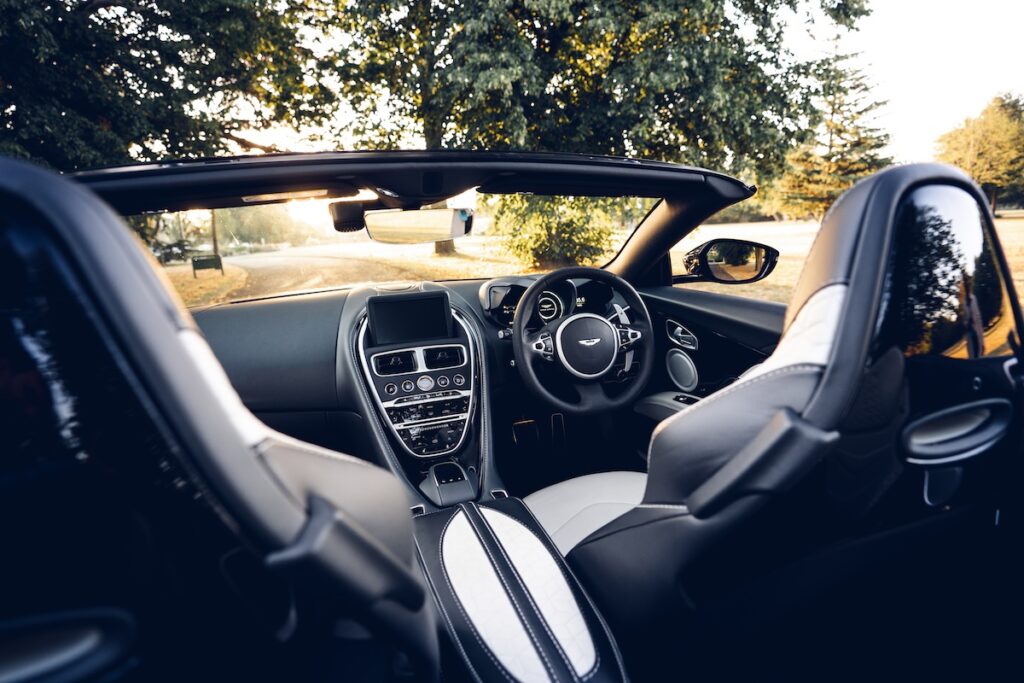
Credit: Sam Moore
Peak power of 715BHP is attained at 6800rpm and, at that point, you either need to be one seriously skilled driver or at least have a good long stretch of straight road. It is addictive under acceleration and, on more than one occasion, I may have deliberately spaced to the Yaris in front, just to be able to return the pedal to the floor and bask in the visceral experience that it delivers. Top speed is given as 211mph and the 0-62 sprint is dispatched in 3.6 seconds. I’m not sure who measures these runs at Gaydon, but the brutality of the delivery makes me think someone fat fingered a three when aiming for the two. Perhaps it was the same guy who adds the flake to the paint.
Last issue I used the DBS as a comparison to the 3.2 second posted 0-62 for the BMW M8, this feels every bit as quick, if not quicker. I used the word ‘greasy’ earlier, and whilst it’s an effective term for the sensation, it doesn’t tell the whole story or do the car justice. The information provided to the driver through chassis feel is not as connected as the previously mentioned Porsche, but it does tell the driver enough to be able to understand and engage with the car’s limits.
Front engine, rear wheel drive is a classic combination and I think that ‘classic’ feel is one of the car’s greatest attributes. The car isn’t easy to drive at speed; it’s a car to be reckoned with. Not feared exactly, but certainly respected. In a market of relatively sanitised speed, a return to the barnstorming ways of the past are a very welcome return. Each input needs to be reasoned with and decisiveness brings rewards. Chassis flex in convertibles is always an issue, yet the DBS feels in no way wallowy or heavy. Having not driven the coupe, I can’t make a definitive statement in comparison, but as a standalone product, I didn’t feel like the Volante was inherently disadvantaged in roofless form. The roof itself is a supremely well insulated product, though if I’m completely honest, I may have only completed a handful of miles with the roof in place. Retracting in a mere 14 seconds and returning in 16, it’s an
easy mechanism and for a little added flamboyance, the roof can be folded up or down from the key fob when within a two-metre radius of the car.
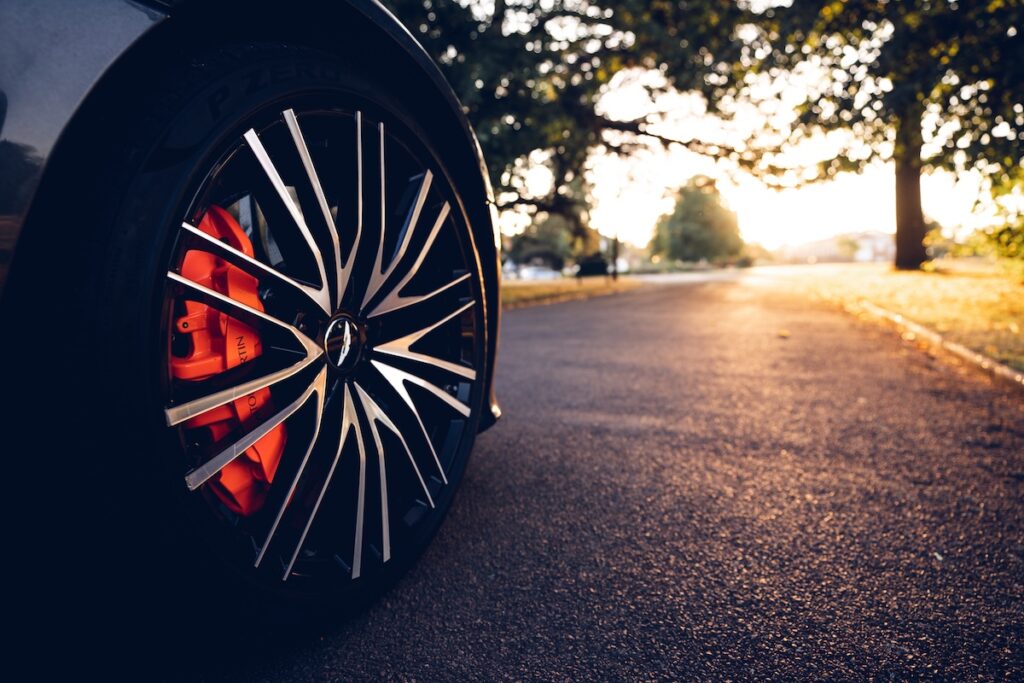
Credit – Sam Moore
Anyway, mere incidentals; back to that drivetrain, that noise. The exhaust is electronically valved and gives various levels of noise and aural excitement. In GT mode, it’s as unassuming as any V12 can be. One is aware of the undoubted power, but no pops, no crackles, no thunder on the overrun. Sport lifts this a little, providing more voice to the shrillness of the V12, into Sport+ where one is introduced to a note so savage and entertaining that I let out a heady laugh the first time I engaged the mode. The noise exits by a quad pipe set up, and with suitable right foot timing, it can be played like it’s Mussorgsky. Thunderous on the overrun and explosive bangs on well-timed downshifts. There is provided a ‘Quiet Start’ button for those not wanting to disturb the other residents of the mews, alert security or a lover’s partner. This three-mode setting is replicated in the suspension set up. In GT it’s truly relaxed, not searching tramlines or ironworks, little intrusion of road noise through wheels and enough damping response to make it a genuinely comfortable place to be.
In Sport, this firms up somewhat. The car feels more hunkered down and as a result will translate more of the surface undulations and imperfections than in GT, but the ride is by no means harsh, and I found this to be the optimal setting for the car.
Race takes it through to the final notch, and one probably best reserved for the track (likely trailered alongside the owners obviously huge testicles) or on surfaces better finished than those we find in this nation’s capital. The time spent in London passed with many a head turned and probably many an ear surprised. As a yardstick for some people’s views on cars, it performed admirably through Sloane Street and beyond.
Given that any given metropolis will probably be the home of a car like this, it’s important that it can perform well in a clogged city setting such as London.
Post rumination, my thoughts: the Aston Martin DBS Volante is an absolutely astonishing car with a certified weapon of an engine. Somewhat flawed in places, but ultimately it uses all of the Aston Martin DNA to produce a truly compelling package. A rarity in that I could imagine a long journey would be completed in comfort and, at the same time, and a flick of a couple of switches, the car could bewitch and beguile on a B-road like few others. It is a car for Aston Martin fans, a car for supercar fans, a car for drivers. Its appeal is that it’s not perfect; its allure is in its form and function that is delivered in a package that is certainly deserved of the monikers that it bears, and also to sit atop the range both for today and historically.
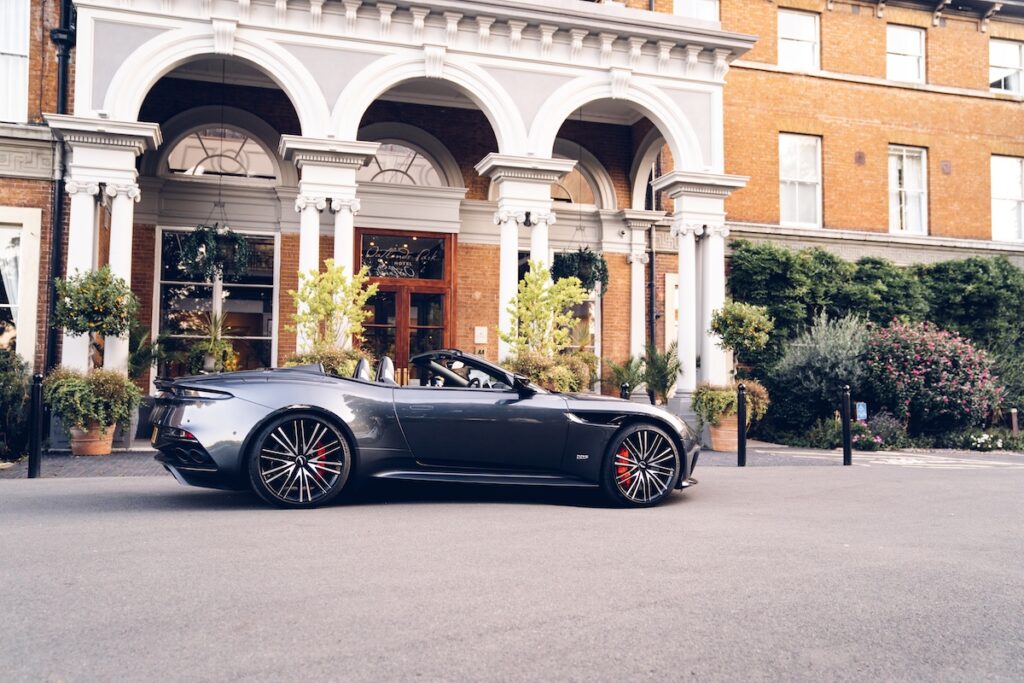
Credit – Sam Moore
So, the infotainment is slightly antiquated, one can’t see much out of the rear aperture with the roof up, and the interior could feel a little more special. The front splitter is annoyingly low and the vents are unfortunately plastic. However, that powertrain really does trump all of that. And if you’re the type of buyer that would allow those things to
dissuade you, then quite frankly, I’m not sure that you deserve one.

